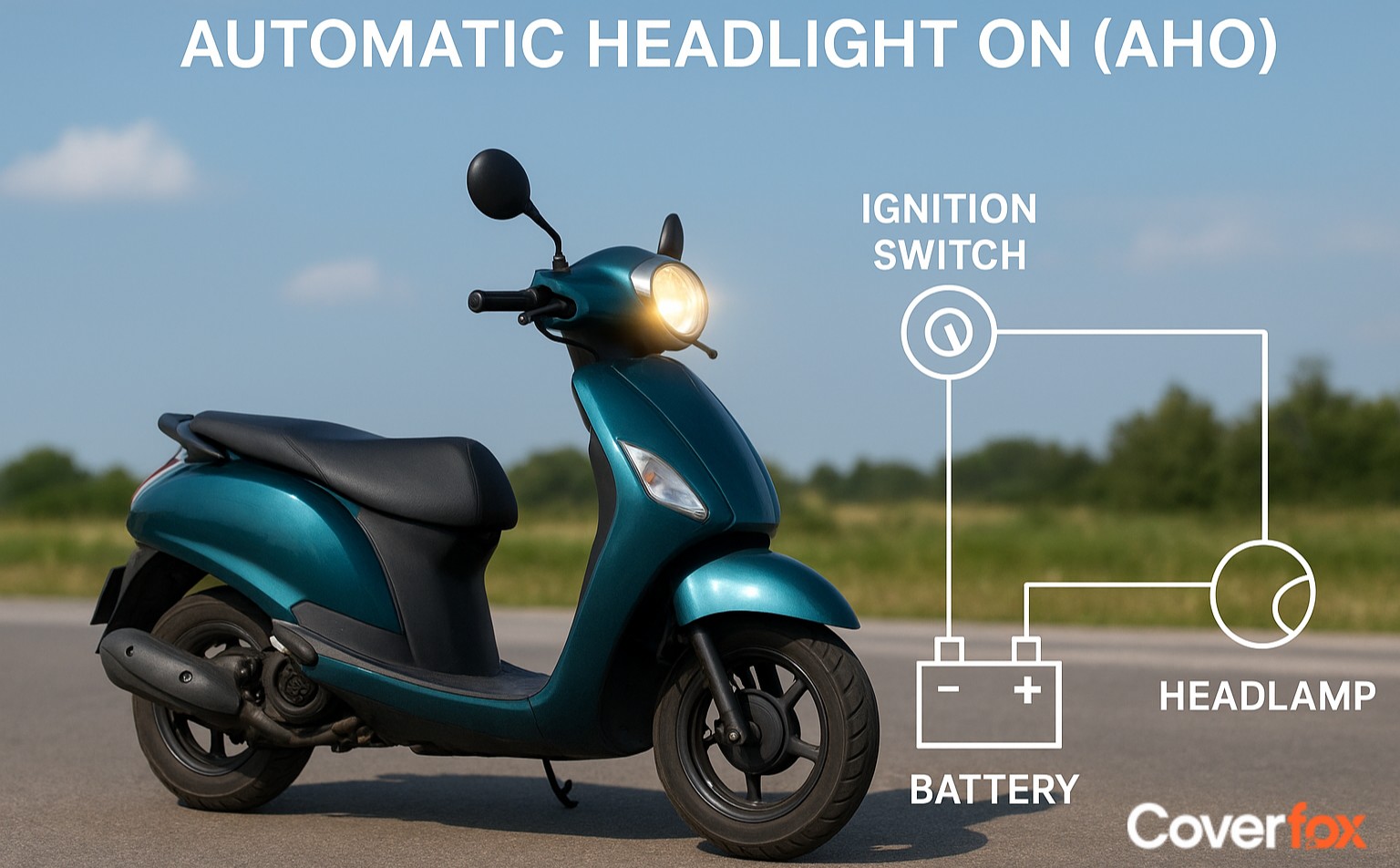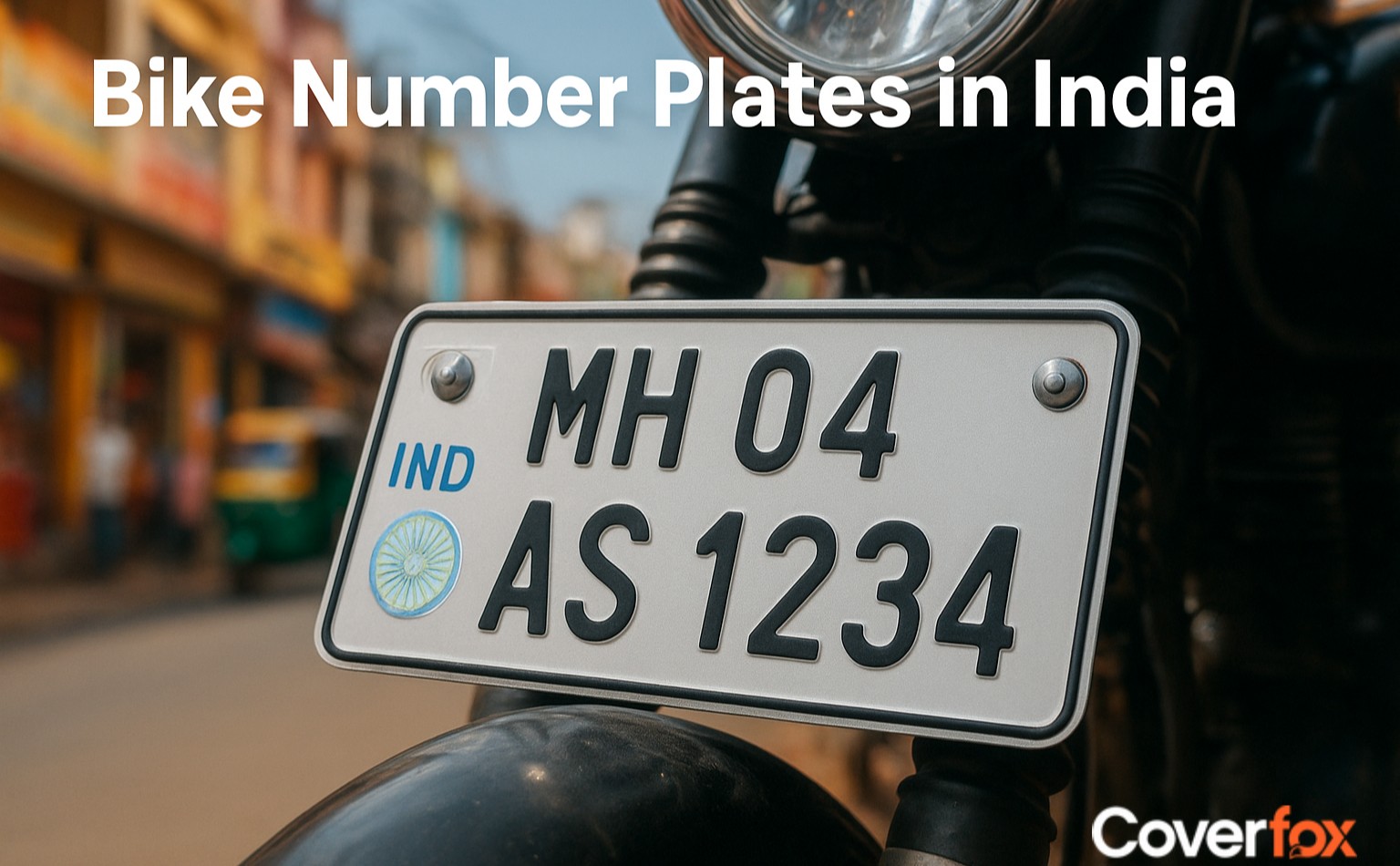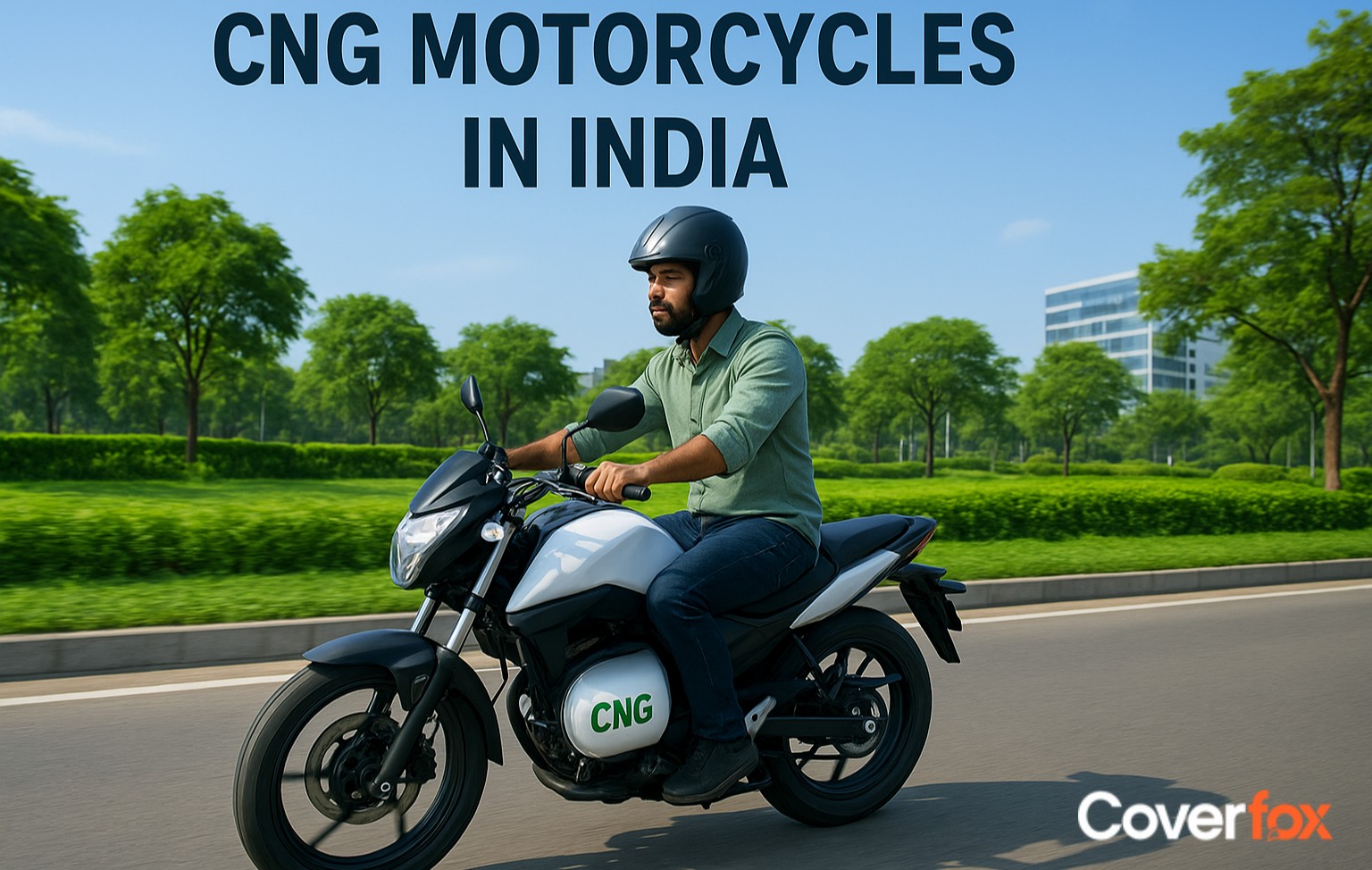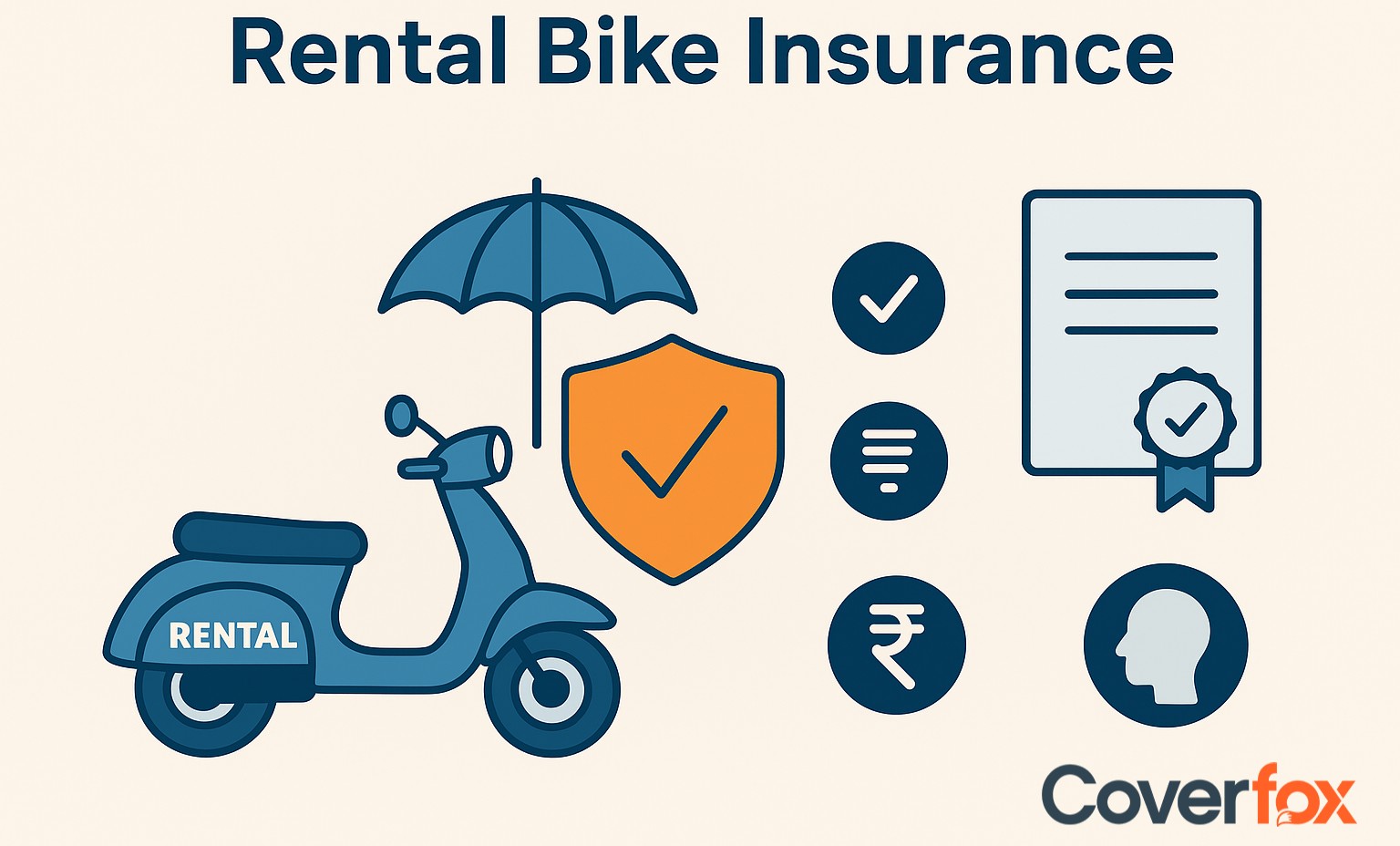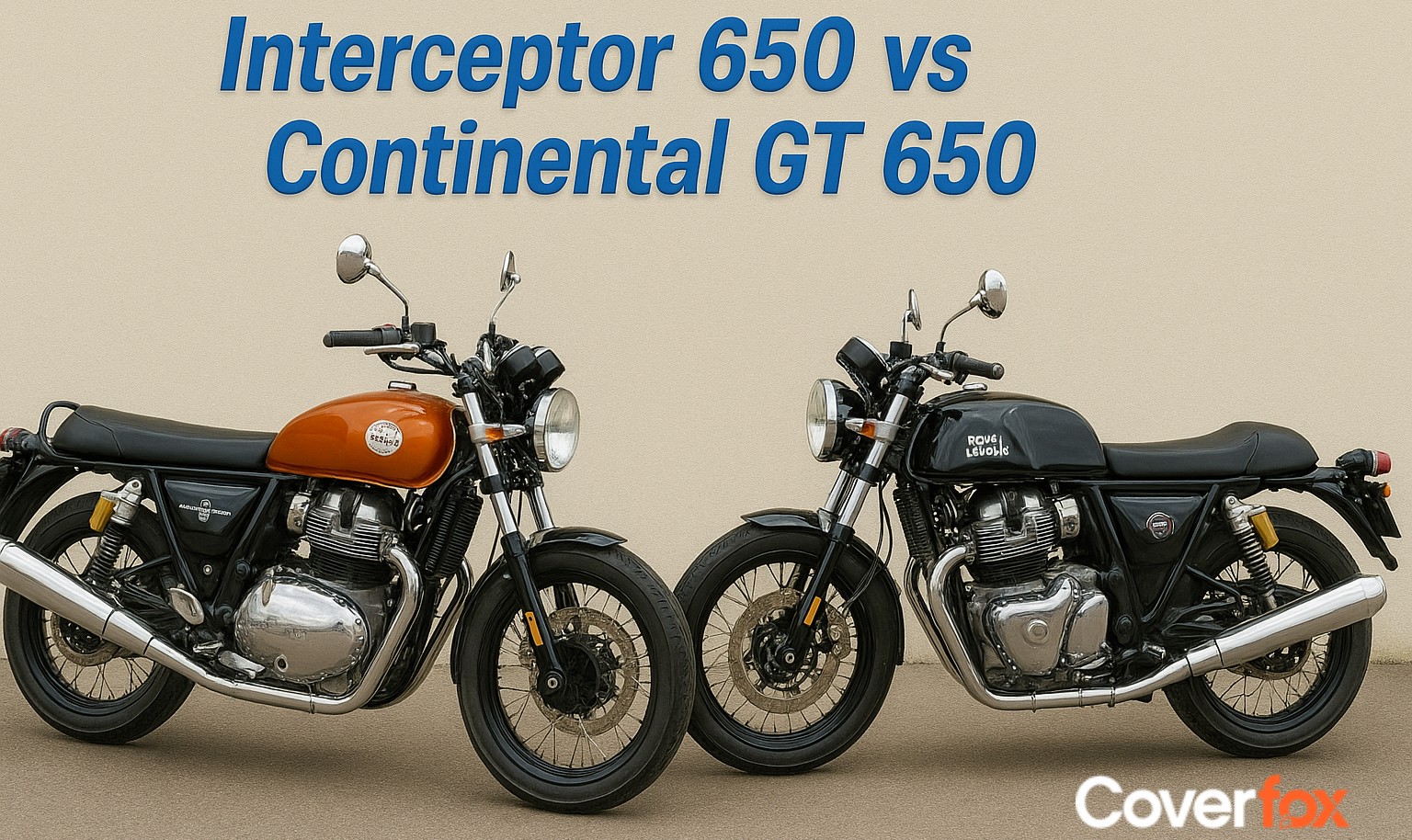Ever wondered what those two wheel-like things are attached to the motorcycle with chains and have tooth-like structure? They are the chain sprocket of the motorcycle, which are vital for complete functioning of the bike.

The tooth-like wheels (Sprockets) are attached at the rear wheel (Bigger one) and at the transmission output shaft (smaller one). These parts need to be maintained regularly, with lubrication and sometimes even require replacement. Let us understand how chain-sprocket works, and what their different types are.
How Motorcycle Chains and Sprockets Work?
Chain sprockets are a major component of the motorcycle and play an important role in the complete functioning of the bike. Let us understand how these chains and sprockets work in a motorcycle, step-by-step:
- The front sprocket (drive sprocket) is connected to the engine
- When the engine runs, it turns the front sprocket, which pulls the chain
- The chain transfers this motion to the rear sprocket (driven sprocket)
- The rear sprocket is attached to the rear wheel, so it spins as the chain moves
- This process transfers engine power directly to the rear wheel, making the bike move
- The efficiency of this system depends on proper chain tension, lubrication, and alignment.
Components of Chain
- Links form the main structure of the chain and connect it end-to-end
- Pins hold the links together and allow movement between them
- Rollers sit between the pins and rotate as they engage with sprocket teeth, reducing friction
- Plates (inner and outer) add strength and keep the chain aligned under tension.
Types of Motorcycle Chains
There are a multitude of motorcycle chains, each catering to specific riding styles, performance needs, and maintenance preferences. A right chain will ensure longer durability, longer life-span, and lower upkeep. Here are the major types of chain that goes in a motorcycle.
1. Non-Sealed Chains
In this type of chain, there is no sealing between the rings and the links. It is the most basic type of motorbike chain. It is affordable, offers less rolling resistance and is lightweight, but it requires frequent maintenance and lubrication because of dirt and water.
2. O-Ring Chains
They are chains with rubber O-rings between the inner and outer links to seal in lubricant. The O shaped ring ensures reduced friction, protecting the inner components from dirt and moisture. This helps to gain a long lifespan.
3. X-Ring Chains
They are the advanced version of O-ring chains. As the name suggests, these chains come with rubber X-shaped rings between the inner and outer links. They are more efficient in reducing friction, and improve lubricant retention and flexibility.
Tips: Lubricate the chains every 500kms or so to ensure longevity and efficiency. Non-sealed chains are generally rare and seen in vintage bikes. O-ring chains are budget friendly but X-ring Chains are the best for longevity.
Motorcycle Sprocket Materials and Sizes
Sprockets deliver power to the wheels, hence an important factor on the overall power of the bike on the road. The material sprockets are made from and their respective sizes affect the performance of the sprockets. There are two major materials based types of sprocket such as steel sprockets and aluminium sprockets.
1. Steel Sprockets:
- Extremely durable and long-lasting
- Ideal for daily riders and touring bikes
- Heavier, which can slightly affect acceleration and agility.
2. Aluminium Sprockets:
- Lightweight, improving acceleration and reducing unsprung weight
- Preferred for racing and performance bikes
- Less durable wears faster than steel.
Typical Sprocket Sizes (Teeth Count)
- Front sprockets with 13-17 teeth
- Rear sprockets with 30-50 teeth
- The size of the teeth depend on the use of the motorcycle.
How Sprocket Size Affects Gear Ratios?
Here is how sprocket size affect top speed, torque and acceleration:
| Size | Top Speed | Torque and Acceleration |
|---|---|---|
| Small Front Sprocket and Large Rear Sprocket | Decreased | Increased |
| Large Front Sprocket and Small Rear Sprocket | Increased | Decreased |
When and Why a Third Sprocket Is Used?
A third sprocket is rarely seen, and is used in a few off-roading bikes. The third sprocket helps reduce chain slack, improves alignment, and prevents chain slap in rough terrain. Street bikes and commuter bikes will not have a third sprocket.
Signs of Chain and Sprocket Wear
It is important for the chains and sprocket to be in top notch condition, to ensure best performance for the bike. Here are a few tells of wear of chain sprockets:
Visible Wear or Damage
Look for worn, broken, or missing teeth on sprockets and rust or kinks on the chain
Chain Slack
Excessive looseness or sagging chain can cause poor power transfer and damage
Noise
Unusual sounds while riding may signal worn components
Poor Performance
Bad acceleration or slippery chain indicate drive system failure
Difficulty Adjusting Tension
If the chain tension keeps loosening quickly, it’s a red flag
Chain Stretch
Measure chain length regularly; if it’s stretched beyond limits, replacement is needed
Visible Lubrication Issues
A dry or rusty chain loses efficiency and wears faster.
Why Change Chain and Sprockets Together?
The chain and sprockets are supposed to be working in harmony. In case one part becomes faulty, it is necessary to replace both of them. If you replace only one part, the new component won’t match the worn one’s pitch and shape, causing poor engagement. This mismatch can lead to chain skipping, uneven wear, increased noise, and even sudden failure.
Replacing both chain and sprockets together ensures:
- Proper pitch alignment
- Extends their lifespan
- Smooth and safe power transfer
- Reduces maintenance
- Prevents costly damage to other parts of the bike.
In short, changing both at the same time keeps your motorcycle running reliably and efficiently.
Motorcycle Chain and Sprocket Maintenance Tips
These tips will help you out in maintaining your bike’s chain sprocket and a two wheeler insurance policy that has an add-on “Consumable Cover” can finance repair costs for these parts.
Regular Cleaning
Remove dirt and grime using a mild degreaser or chain cleaner every 500-800 km
Proper Lubrication
Apply chain lubricant to the inside of the chain after cleaning, ideally after every 300-600 km
Check Chain Tension
Ensure the chain has the correct slack as per your bike’s manual to avoid excessive wear or chain slip
Inspect for Wear
Regularly look for stiff links, rust, worn sprocket teeth, or chain stretch. Replace parts if damage is visible
Avoid High-Pressure Washes
Direct water jets can wash away lubrication and cause corrosion
Adjust After Stretching
Chains naturally stretch over time; adjust tension periodically to keep it optimal
Replace in Sets
When replacing, change both the chain and sprockets together for best performance
Store Properly
If the bike is unused for long periods, clean and lubricate the chain before storage to prevent rust.
How to Choose the Right Chain and Sprocket Set for Your Motorcycle?
Choosing the right chain sprocket set for your motorcycle is an important decision as it is essential for your bike’s performance, safety, and longevity. The right choice depends on various factors like:
Riding Style
Spirited riders and performance lovers prefer light-weight, performance heavy chain sprockets, whereas daily commuters prefer durable, long-lasting chain sprockets.
Bike Model
Always check your motorcycle manufacturer’s recommendations for compatible chain sizes and sprocket types.
Chain Type
Choose between non-sealed, O-ring, or X-ring chains based on maintenance preferences and durability needs.
Sprocket Size
Adjust sprocket teeth count to modify acceleration or top speed according to your riding goals.
Compatibility
Ensure you buy chains and sprockets that are compatible with each other.
After-market customisations
After market customisations of sprockets and chains prove to be more effective and can be adjusted as per rider needs.
Things to Keep in Mind
Even though small, chain sprockets are an essential part of the motorcycle. It is the main bridge for engine power to reach the wheels. Ensure you get the best suitable chain sprocket combo for your bike, and maintain them well. Add an “Consumable Cover” to ensure bike insurance covers repair costs for these parts.
Explore More:
Frequently Asked Questions
How long does a chain and sprocket usually last?
Depending on the type, it generally works efficiently for 300-500kms.
Can I replace just the chain or sprockets separately?
You can, but ensure both chain and sprockets are compatible with each other.
What happens if the chain is too tight or too loose?
A tight chain can strain the engine and wear it down. A loose chain can deteriorate acceleration and give jerky movements. Have a balance between the two for perfect functioning.
How do gear ratios affect motorcycle speed?
The teeth and size of the sprockets affect motorcycle acceleration, torque and top speeds.
How to tell if my chain has an O-ring or X-ring?
Look closely at the side of the chain links, and the O ring will have a round shape, whereas an X ring will have X shaped seals.
Which material will be ideal for a sprocket?
Steel is best for long-lasting durability and everyday use. Aluminium is ideal for performance or racing due to its light weight.
